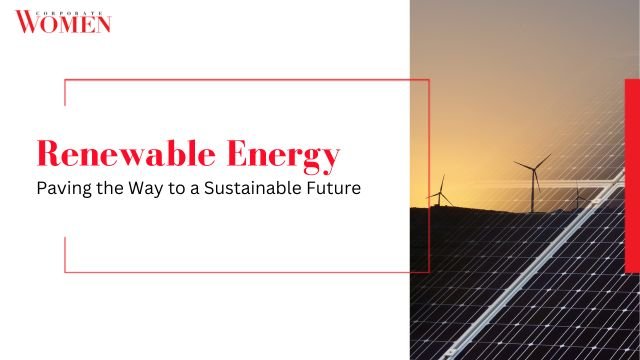Amplify Your Leadership Voice Worldwide
Join 7,000+ industry leaders sharing insights with millions of professionals globally
Join 7,000+ industry leaders sharing insights with millions of professionals globally

Renewable energy has emerged as a crucial solution to the growing challenges posed by climate change and energy security. Unlike fossil fuels, which are finite and contribute to greenhouse gas emissions, renewable energy sources harness natural elements that continuously replenish, making them sustainable for generations to come. This article delves deeper into the different types of renewable energy, their unique advantages, and the challenges that accompany their integration into our energy systems.
Solar energy, derived from the sun’s rays, is perhaps the most recognizable form of renewable energy. Photovoltaic solar panels convert sunlight into electricity, while solar thermal systems harness heat for water heating or space heating. Solar power is abundant, widely available, and particularly suitable for decentralized energy generation. However, its dependence on weather conditions creates concerns over intermittency and requires complementary storage solutions to ensure a consistent power supply.
Wind energy utilizes wind turbines to convert the kinetic energy of moving air into electricity. Wind power’s scalability and potential for large-scale installations make it an attractive option for utility-scale projects. However, wind energy’s intermittency and reliance on favorable wind conditions necessitate grid integration strategies and energy storage to maintain grid stability.
Hydroelectric power exploits the flow of water in rivers and reservoirs to generate electricity through turbines. Large-scale hydroelectric dams offer reliable power generation, while smaller run-of-the-river facilities minimize environmental impacts. Despite its dependability, hydroelectric energy faces criticism for habitat disruption and alterations in downstream ecosystems.
Geothermal energy harnesses the Earth’s internal heat to generate electricity or provide direct heating for buildings. Regions with geothermal resources can enjoy constant and sustainable power, but its limited geographical availability restricts its widespread adoption.
Biomass energy utilizes organic materials like wood, agricultural residues, and waste to generate heat or electricity. Biomass can also be converted into biogas through anaerobic digestion. However, biomass combustion raises concerns about air pollution and its impact on local air quality.
Renewable energy is the cornerstone of environmental sustainability, as it produces minimal or no greenhouse gas emissions. Embracing renewables mitigates climate change, preserves ecosystems, and reduces reliance on finite resources.
By generating energy locally, countries can reduce their dependence on imported fossil fuels, enhancing energy security and shielding their economies from external supply disruptions and price fluctuations.
The transition to renewable energy fosters job creation across various sectors, spurring economic growth and providing opportunities for a green economy workforce.
While the cost of renewable energy technologies has significantly decreased over the years, some renewables remain more expensive than conventional fossil fuels. Addressing these cost differentials is vital to accelerating renewable energy adoption.
Intermittency poses a significant challenge for solar and wind power. Developing effective energy storage technologies, such as batteries and pumped hydro storage, is essential to store excess energy for times of high demand.
Integrating renewable energy into existing energy grids requires upgrades to accommodate variable generation. Smart grid technologies, demand-response mechanisms, and grid flexibility are vital components of successful integration.
Renewable energy stands at the forefront of the global push for a sustainable and resilient future. Embracing solar, wind, hydroelectric, geothermal, and biomass energy sources offers myriad environmental, economic, and social benefits. However, addressing challenges related to intermittency, energy storage, and grid integration is critical to unlocking the full potential of renewable energy. With ongoing research, innovation, and supportive policies, the world can transition to a cleaner, greener, and more equitable energy landscape, paving the way to a sustainable future for generations to come.
Join industry leaders who have shared their insights with millions of professionals globally.
Copyright © 2025 The Corporate Women. All Rights Reserved.